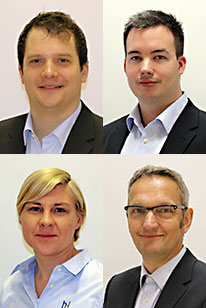Filtration via activated carbon
Filtration via activated carbon is generally not used in water treatment for solids and particle separation. The main use of activated carbon is the adsorption of organic and inorganic water components.
Charcoals based on hard coal or coconut are thermally activated in the production process, thereby achieving the very large internal surface typical of activated carbon. The internal surfaces adsorb many chemical trace substances to equilibrium. During operation, this equilibrium zone shifts in the direction of the filtration, i.e. the filter is loaded until it breaks through. For this reason, activated carbon filters must not be flushed in adsorption applications. Loaded or exhausted material must be replaced with new or regenerated material.
Activated carbon also acts as a reducing agent for ozone and chlorine, although this results in material depletion.
Filtration over activated carbon is primarily used for removing
- surplus chlorine,
- odour,
- colour,
- taste,
- halogenated hydrocarbons,
- pesticides etc.
Activated carbon is also an excellent carrier for ozone bio-filtration. We only use tested and certified activated carbons in accordance with the relevant standards. Activated carbon filters are also increasingly being used in the wastewater sector as the final cleaning stage for removing trace substances.
Our scope of service also encompasses the removal of exhausted carbon as well as application advice and correct installation. Please contact us.



